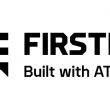A matter of perspective
Airborne satellite communications are providing U.S. military personnel with unprecedented mobility and quickly are becoming the newest frontier of advanced battlefield communications. Additionally, airborne communications are giving first responders bird’s-eye views of emergency situations — often as they develop — and are helping with intelligence, surveillance and reconnaissance (ISR) activities for military and emergency/disaster-response missions.
By taking the fight to the air, airborne systems are giving warfighters a panoramic view of their surroundings. Troops also are getting a steady stream of updated and accurate information, making them more effective than ever before. The U.S. military now can communicate in the air with troops at sea, on land and in remote locations, where terrain and range often jam terrestrial-based communication signals. Airborne satcom can provide target information imagery in addition to imagery of natural and man-made disasters.
For first responders, the ability to obtain and disseminate critical situational awareness is vital to emergency response. Airborne satcom can communicate real-time situational awareness information via voice, data and video transmissions to people on the ground. This enables first responders to obtain a situational analysis of the current events and status updates; it also provides quick information about potential hazards, as well as insight regarding the impact of the emergency, which helps to determine whether additional response is needed.
With airborne communications, for example, first responders and hazmat crews can be directed to a large-scale flood location while people on the ground can be provided safe evacuation routes, critical information that is made possible by the sky-down view of the incident. Such information can be invaluable to emergency managers and public-safety officials as they decide how to best apply their assets to respond to an incident. In fact, major advances in the speed and throughput of satcom signals over the past several years have made high-definition video a reality for airborne applications. These advances include the ability to upload full-motion video while in flight, a capability that greatly fortifies emergency/disaster-response efforts.
The Department of Defense is leading the drive to push more of these innovative airborne applications into development for military operations — and the technology is ripe for it. Smaller satellite dishes, more effective compression technologies, automatic beam switching, the OpenAMIP standards and the efficient use of spread spectrum technology together have fueled the growth of mobile communications over satellite. Spread spectrum technology is becoming increasingly important in military and first responder environments where small ISR aircraft require ever smaller satellite antennas.
OpenAMIP facilitates the exchange of information between an antenna controller unit and a satellite router. It allows the router to command the antenna and enables the use of automatic beam switching (ABS), which transfers connectivity from one satellite beam to the next as an aircraft passes through multiple footprints. In addition, OpenAMIP and ABS enable service providers and their customers to meet government regulations by commanding the antenna to mute the signal in no-transmit zones. OpenAMIP also eliminates the need for proprietary coding so that new antennas and routers introduced into the market will work together; it also lets maritime organizations choose from a wider selection of hardware to best suit their needs.
During flyovers of the U.S. Gulf Coast last summer, a high-tech plane equipped with auto-tracking antennas and state-of-the-art infrared cameras shot high-definition video images of the 3,300-square-mile Deepwater Horizon oil spill, in large measure to track where the oil was spreading. The images were transmitted to the U.S. Coast Guard and cleanup workers over a secure satellite communications backbone. This real-world implementation of airborne satellite and video connectivity represents one of the first times that airborne satellite communications have been used to assess and manage a major oil spill. The system was vital for up-to-date situational awareness and gave the Coast Guard and cleanup workers a view they could not have obtained any other way.
Inside the aircraft, the modem, antenna and the plane’s navigational system all worked in concert. The result was a solution that substantially increased data rates, anticipated the transit between satellite footprints and accommodated the rapid Doppler Effect shifts that occur during flight — i.e., the high speeds, turbulence and rapid shifts in altitude that can create problems in receiving satellite signals — which let the antenna react more quickly to aircraft movement and to integrate into many of the ISR systems being used today. Additionally, the solution was able to accommodate hundreds of aircraft in one network and track their movements dynamically if required.
The use of satellite and video technologies inside of aircraft to assess the damage caused by the oil spill underscores the recent advances made in the field of airborne communications. The key to effectively communicating in the air, similar to other communications-on-the-move (COTM) platforms is the integration of all the parts. COTM delivers real-time, secure and reliable video, data and voice transmission for the military, government agencies, first responders and other support organizations, whether they are in transit or at the incident site.
Although mobile communications is not a new concept, a growing number of technological advancements in recent years have made widespread deployment more cost effective and achievable for the military and emergency response agencies.
Some of the greatest developments in COTM technology are taking place with airborne communications. Airborne COTM can be just as reliable as ground-based COTM with the use of specialized wave forms that support increased vehicle speeds. By using automatic beam switching and persistent IP addressing for airborne communications, aircraft can be flown from the U.S. to Europe and on to a final destination in Southwest Asia, all while maintaining a global network of advanced communications enabled by the seamless switching from one satellite to the next throughout its journey. This network even extends to soldiers departing the aircraft with communications-equipped manpacks that include mobile satellite router boards. Paratroopers quickly and easily can set up communications on the ground to suit any mission.
Sophisticated airborne technology includes built-in FIPS 140-2 AES encryption combined with Transmission Security (TRANSEC), which guarantees the highest level of security for data communications. Airborne satellite bandwidth leverages spread spectrum technology that enables voice, video and data on the move. This technology includes a global network management system that provides roaming remote management along with automatic beam switching and geographical mapping.
|
For all of the advantages that airborne communications systems bring to the table, however, the technology is not without its challenges, which range from interference issues to security concerns. For example, one concern is that IP-based, very small aperture terminal (VSAT) architectures are susceptible to adversary monitoring. New military TRANSEC requirements allow the DoD to obfuscate any satcom traffic volume or remote terminal acquisition activity, which — either on its own, or when coupled with other intelligence information — may prove useful to an adversary. In addition, without adequate integration between the antenna and modem, airborne communications are inefficient. The need for high-definition video captured and transmitted by military aircraft communications is an ISR requirement that has been difficult to achieve in the past due to the requirement for very high in-bound data rates through ultra-small antennas. In any military mission or emergency response, obtaining and communicating clear and accurate information is vital. Airborne communications provide a reliable picture of the extent of the mission or emergency/disaster at hand. This vital capability will help the military, first responders, government officials and all of those charged with protecting people, property and infrastructure respond properly and effectively to any event, and enable them to execute their missions with a heightened degree of safety and success. |
Karl Fuchs is vice president of technology at iDirect Government Technologies; contact him at [email protected].
Related Stories
















